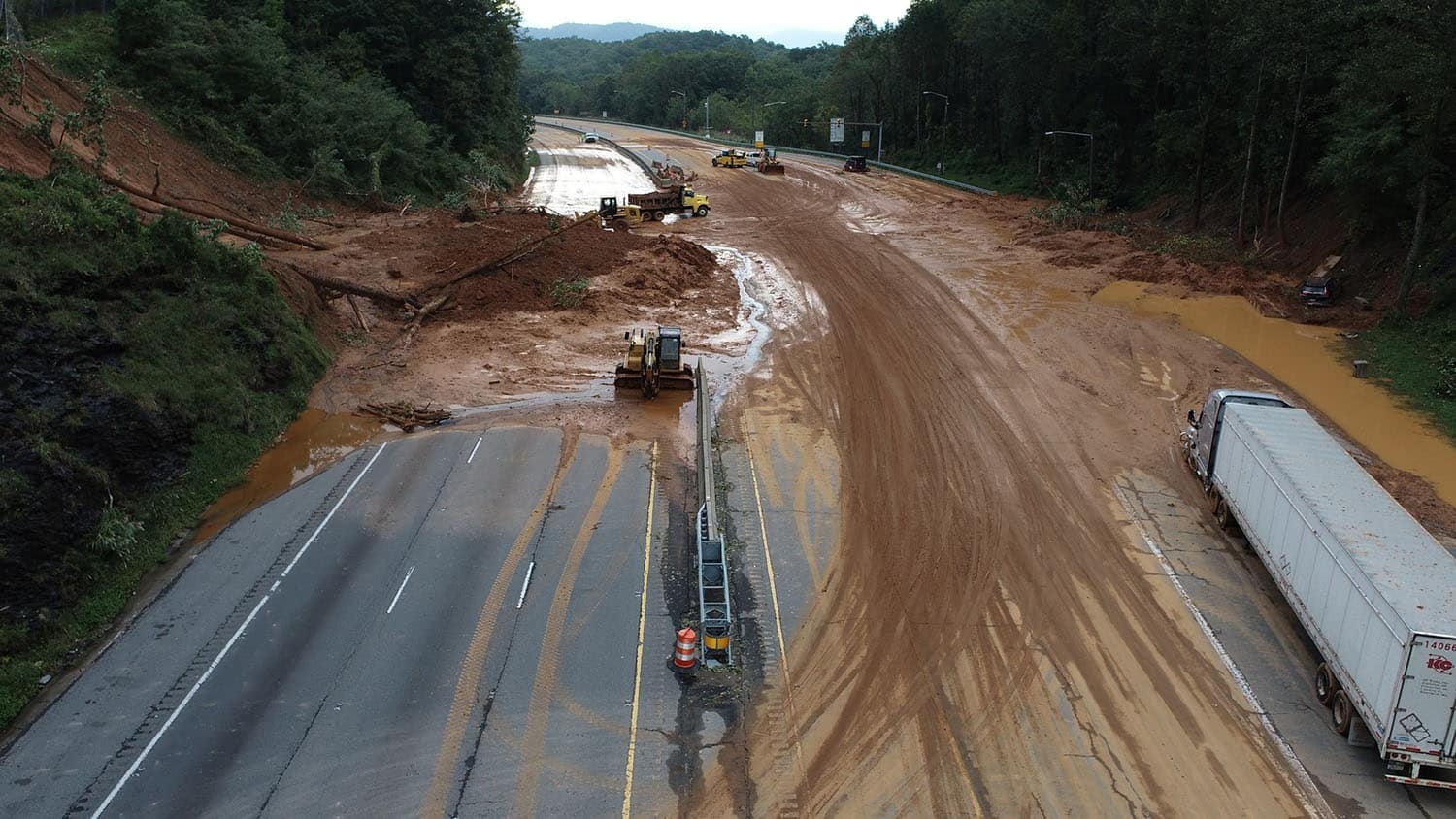Hurricane Helene caused severe flooding in western North Carolina, resulting in extensive damage to highways, local roads, and transportation infrastructure. To learn more about how this affects traffic and freight transportation – and what to expect in the near future – we spoke with Daniel Findley, associate director of the Institute for Transportation Research and Education at NC State University.
The Abstract: Which highways are closed in western North Carolina due to flooding caused by Hurricane Helene?
Daniel Findley: One thing we know for sure is that NCDOT [North Carolina Department of Transportation] will continue doing everything in its power to safely restore the damaged roads and bridges as quickly as possible, but many roadways – including stretches of I-40, I-26, and US 64 – are currently impassable. People can get up-to-date, detailed information at DriveNC.gov.
TA: Those road closures obviously create significant problems for people. The closures also pose challenges for moving freight – a lot of tractor trailers use those roads. How does freight normally move through that area? Where is it coming from and where is it going?
Findley: Truck transportation is the most common method of moving freight in western N.C., and Interstates 40 and 26 are key routes in the region for freight traffic. This freight transportation both supports and relies on numerous businesses in the transportation, distribution, and logistics industry, many of which are concentrated along the interstate and U.S. highway corridors. There will be freight needs everywhere during the recovery and rebuilding, so most roads will experience higher than normal truck traffic during this time.
From a broader, national perspective, there are important freight connections in and through the impacted areas on I-26 and I-40, as well as the U.S. and N.C. highways in the area. The freight being transported on these roads serves markets in the mountain communities, as well as exporting products from the region to domestic and international markets.
TA: How might all that freight be re-routed?
Findley: Re-routing of freight will be highly dependent on the origin and destination of the goods. For instance, for long-distance freight, particularly to or from ports, shippers will have multiple options to re-route freight around the region most heavily impacted. However, during and after a disaster, there is a substantial need for goods such as construction materials, infrastructure equipment, and so on, which will require flexible and reliable freight systems to supply the recovery and rebuilding efforts in the region.
Early reports show that transportation officials and law enforcement are working closely with shippers to get the goods and materials where they’re needed most.
TA: Which industries in North Carolina are likely to be affected by these disruptions in their supply chains?
Findley: North Carolina has a diverse and robust supply chain that supports a wide variety of jobs and industry, and every industry involves businesses that were affected by Hurricane Helene. The counties most heavily impacted by the storm contribute substantially to industries involved in the supply of forestry products (wood, paper products and building materials), chemical manufacturing, industrial machinery, food products, metal products, textiles, and transportation (including distribution and logistics).
TA: Do we have any estimates on when any of these routes will be restored?
Findley: I recommend using the official estimates from NCDOT, which can be found at DriveNC.gov. We should prepare for some of these roadways to be out of commission for quite some time. For instance, right now it looks like the section of I-40 near the Tennessee line is not estimated to re-open until October 2025. However, it’s worth noting that these estimates may change after NCDOT has been able to fully evaluate the condition of each road.
This post was originally published in NC State News.
- Categories:



